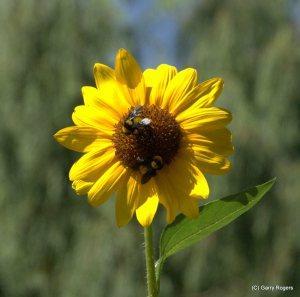Source: Living With Insects Blog

“The use of neonicotinoid insecticides was widely adopted in the 1990s as one of the few effective pesticides against sweet potato whitefly and other sucking insects. Some of the organophospates with high toxicity to humans were displaced by neonicotinoids with low toxicity to humans, greatly reducing the human health hazards.
“Neonicotinoid use has grown in the last decade, especially as seed treatments. Many crop seeds are only sold treated with neonicotinoids as a “seed insurance” whether or not the grower wants it. The neonicotinoids are being used against variable insect pests that may not even be present. In such situations, harm outweighs benefit. Neonicotinoids have long residual life in the soil and are water soluble. Neonicotinoids are detectable in surface waters near agricultural areas. Plants absorb neonicotinoid from the soil and translocate it into the tissues and plant fluids such as nectar. Neonicotinoids are orders of magnitude more toxic to bees than the insecticide carbaryl, previously the chief cause of complaints from beekeepers. These are all reasons why use should be limited to only where necessary.
“A group of Dutch scientists* have found a correlation between declining populations of some insectivorous birds and neonicotinoid use. They suggest that their observed effect may be due to direct effects of neonicotinoids in the bird’s diet or an indirect effect by decreasing the insect food available to birds. Correlation is not causation and the link needs more supporting evidence to be widely accepted. Aside from the new concerns about birds, there are other concerns that overuse of neonicotinoids on multiple crops will lead to pest resistance. The history of modern synthetic insecticides is filled with instances of insecticide overuse for short-term gain leading to resistance and loss of sustainable value.”
The article on birds:
*Caspar A. Hallmann, Ruud P. B. Foppen, Chris A. M. van Turnhout, Hans de Kroon & Eelke Jongejans. 2014. Declines in insectivorous birds are associated with high neonicotinoid concentrations. Nature: 17 JULY 2014, VOL 511: 341-4.
doi:10.1038/nature13531

